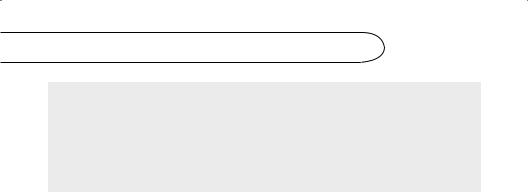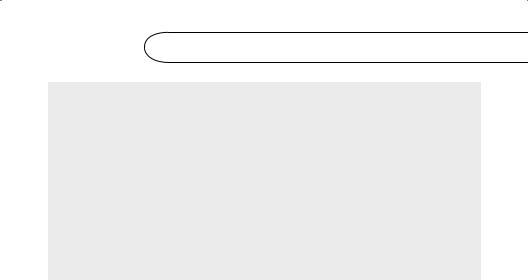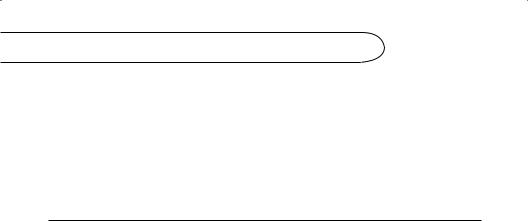
- •Contents
- •Series Preface
- •Acknowledgments
- •RATIONALES UNDERLYING NEPSY AND NEPSY-II
- •NEPSY DEVELOPMENT
- •NEPSY-II REVISION: GOALS AND DEVELOPMENT
- •COMPREHENSIVE REFERENCES
- •CONCLUDING REMARKS
- •APPROPRIATE TESTING CONDITIONS
- •TYPES OF ASSESSMENTS
- •ASSESSING CHILDREN WITH SPECIAL NEEDS
- •OTHER ADMINISTRATION CONSIDERATIONS
- •SUBTEST-BY-SUBTEST RULES OF ADMINISTRATION
- •COMPUTER SCORING
- •PREPARATORY TO SCORING
- •ORDER OF SCORING
- •STEP-BY-STEP SCORING
- •TESTS WITH COMPLEX RECORDING AND/OR SCORING
- •QUICK-SCORING: DESIGN COPY GENERAL (DCG)
- •DESIGN COPYING PROCESS (DCP) SCORING
- •OVERVIEW OF SUBTEST SCORES
- •SUMMARIZING NEPSY-II SCORES
- •CONCLUDING REMARKS
- •GOALS OF INTERPRETATION AND IMPLEMENTATION OF GOALS
- •STEP-BY-STEP INTERPRETATION OF NEPSY-II PERFORMANCE
- •INTRODUCTION
- •TEST DEVELOPMENT
- •STANDARDIZATION
- •PSYCHOMETRIC PROPERTIES
- •ADMINISTRATION AND SCORING
- •INTERPRETATION
- •OVERVIEW OF STRENGTHS AND WEAKNESSES
- •THE NEPSY-II REFERRAL BATTERIES
- •DEVELOPMENTAL DISORDERS AND NEPSY-II
- •EVIDENCE OF RELIABILITY IN NEPSY-II
- •CONVENTIONS FOR REPORTING RESULTS
- •RELIABILITY PROCEDURES IN NEPSY-II
- •CONCLUDING REMARKS
- •CASE STUDY #1: GENERAL REFERRAL BATTERY
- •CLINICAL IMPRESSIONS AND SUMMARY
- •PRELIMINARY DIAGNOSIS
- •RECOMMENDATIONS
- •DIAGNOSIS
- •Appendix: NEPSY-II Data Worksheet
- •References
- •Annotated Bibliography
- •About the Authors
- •Index

10 ESSENTIALS OF NEPSY-II ASSESSMENT
(continued )
■ The increased emphasis on RTI makes it essential for clinicians to focus the results of their assessment on informing instruction or intervention.  It is not suffi cient to diagnose a disorder or make a classifi cation.
It is not suffi cient to diagnose a disorder or make a classifi cation.
 The assessment should provide information relevant to improving services provided to the child. This may be a specific intervention, remediation, or accommodation to provide the best learning environment for the child.
The assessment should provide information relevant to improving services provided to the child. This may be a specific intervention, remediation, or accommodation to provide the best learning environment for the child.
NEPSY DEVELOPMENT
Twenty years ago, the scarcity of pediatric neuropsychological instruments led Marit Korkman, a pediatric neuropsychologist from Finland, to develop NEPS (Korkman, 1980), a brief assessment designed specifically for children 5.0 to 6.11 years of age. Various aspects of attention, language, sensorimotor functions, visuospatial functions, and memory and learning were each assessed with two to five tasks similar in content to the tasks in Luria’s assessment (Christensen, 1975). Although the method proved most useful, the narrow age range was problematic, as was the pass/fail criterion that was built on the medical model (Korkman, 2000).
The NEPS was revised psychometrically by adding more items so that the results could be expressed in graded scores. These were converted to z-scores (mean = 0 ± 1) based on age norms. During this revision new subtests were added, derived from tests that had proven useful in pediatric neuropsychology (e.g., Benton, Hamsher, Varney, & Spreen, 1983; Boehm, 1986; Reitan, 1979; Venger & Holmomskaya, 1978). To complement the test, the shortened versions of the Token Test (De Renzi & Faglioni, 1978), the Motor Free Visual Perception Test (Colarrusso & Hammill, 1972), and the Developmental Test of Visual-Motor Integration (Beery, 1982) were used in their original forms and standardized along with NEPSY. Norms were collected for ages 3.6 to 9.5. The assessment was called NEPS-U in Finnish and NEPSY in English (Korkman, 1988a, 1988b, 1988c). The Swedish NEPSY for children aged 4.0 to 7.11 was published in 1990 (Korkman, 1990), and the Danish version for the same age range was published in 1993 (Korkman, 1993).
In the spring of 1987, Marit Korkman, Ursula Kirk, and Sally Kemp began to collaborate on the American NEPSY, while keeping in mind international needs. It was planned to incorporate revisions and new subtests based on traditions and views central to contemporary neuropsychological traditions of assessment, as well as to expand the age range to ages 3 to 12. New subtests were designed to serve an extended period of development. The American NEPSY was developed in three phases: Pilot Phase (1987–1989), Tryout Phase (1990–1994), and Standardization and Validation Phase (1994–1996). During the early pilot phase, the original NEPSY subtests were adapted and revised for 3- to 12-year-old

OVERVIEW 11
children. New items were added, new subtests were developed, and some subtests based on the work of others, such as Fingertip Tapping and Phonemic Fluency (Benton, Hamsher, Varney, & Spreen, 1983; Denckla, 1973), were included. A detailed account of the development of NEPSY is available in the previous volume in this series, Essentials of NEPSY (Kemp, Kirk, & Korkman, 2001)
NEPSY, A Developmental Neuropsychological Assessment was published in the United States in January 1998 (Korkman, Kirk, & Kemp). Just prior to its publication, a corresponding version of NEPSY was published in Finland (Korkman, Kirk, & Kemp, 1997). A corresponding version was also published in Sweden (Korkman, Kirk, & Kemp, 2000). After publication of the NEPSY in the United States, its validity was further demonstrated in a number of publications and it has been employed clinically in pediatric neuropsychological assessments in schools, clinics, and hospitals across the United States. (Rapid Reference 1.4 summarizes the history of NEPSY publication).
 Rapid Reference 1.4
Rapid Reference 1.4
The History of NEPSY
|
Scandinavia |
|
|
|
United States |
|
|
|
|
|
|
|
|
|
|
|
Age |
|
|
|
Age |
Phase of |
|
|
Range |
Country of |
|
|
Range |
Development |
|
Year |
(years) |
Publication Author(s) |
Year |
(years) |
(U.S.) |
Author(s) |
|
|
|
|
|
|
|
|
|
1980 |
5.0–6.11 |
Finland |
Korkman |
|
|
|
|
1988 |
3.6–9.5 |
Finland |
Korkman |
1987–89 2.0–12.11 Pilot Phase |
Korkman, |
||
|
|
|
|
|
|
|
Kirk, and |
|
|
|
|
|
|
|
Kemp |
1990 |
4.0–7.11 |
Sweden |
Korkman |
1990–94 2.0–12.11 Tryout |
Korkman, |
||
|
|
|
|
|
|
|
Kirk, and |
|
|
|
|
|
|
|
Kemp |
1993 |
4.0–7.11 |
Denmark |
Korkman |
1994–96 3.0–12.11 Standardization Korkman, |
|||
|
|
|
|
|
|
|
Kirk, and |
|
|
|
|
|
|
|
Kemp |
1997 |
3.0–12.11 Finland |
Korkman, |
1998 |
3.0–12.11 Publication |
Korkman, |
||
|
|
|
Kirk, and |
|
|
|
Kirk, and |
|
|
|
Kemp |
|
|
|
Kemp |
2000 |
3.0–12.11 Sweden |
Korkman, |
|
|
|
|
|
|
|
|
Kirk, and |
|
|
|
|
|
|
|
Kemp |
|
|
|
|
|
|
|
|
|
|
|
|

12 ESSENTIALS OF NEPSY-II ASSESSMENT
NEPSY-II REVISION: GOALS AND DEVELOPMENT
Revision Goals
In the fall of 2003, the authors began work on the revision of NEPSY in order to incorporate new research in neuropsychology, neuropsychiatry, and education. Client and expert feedback on the NEPSY also needed to be addressed. From author experience and early pilots of revisions and new subtests, four primary revision goals were formulated to:
1.Improve subtest and domain coverage across the age span. The first task in order to improve coverage was to review the NEPSY subtests in view of the need to include subtests over a wider age range, from 3 to 16 years. Further, in response to changes and advances in the field demonstrating the importance of executive functioning, new tests were designed to assess executive functioning:
•Animal Sorting
•Clocks
•Inhibition
The Visuospatial Processing domain had the fewest subtests of any NEPSY domain; therefore, two new subtests were developed to assess mental rotation and visuospatial analysis. Further, a need to include nonmotor, perceptual tests was recognized. Two subtests without motor input were developed that tap spatial location, the ability to deconstruct a picture, and the ability to observe ecological visual details:
•Geometric Puzzles
•Picture Puzzles
The Social Perception domain was created to enhance the assessment of children with autism spectrum disorders or other social perceptual deficits. The domain includes two new subtests measuring:
•Affect Recognition
•Theory of Mind
2.Enhance clinical and diagnostic utility. In the previous version of the NEPSY, global domain scores often masked subtle deficits. Therefore, the domain scores were dropped from the NEPSY-II in favor of the more clinically sensitive subtest-level scores. On NEPSY-II, the clinician reviews the performance of the child at the level of specific abilities rather than at the global domain level. In this review the clinician may also score the performance for variations in the process of performance. Process scores may, for example, express types of errors.

OVERVIEW 13
Other scores, called contrast scores, express a comparison of how the child performs on different conditions or complexity of a task. The child may, for example, find it easier to attend to local visual aspects than to global configurations, or may be able to carry out a simple version of a task but fail to accomplish the task when the instruction is made more complex. The number of behaviors for which base rates in the standardization population are provided has also been increased. These base rates allow the clinician to compare features that may occur as the child performs to average rates of such behaviors in sameage children. Such behaviors may include, for example, out-of-seat behaviors, rate changes, or asking the examiner to repeat the instruction.
Particular attention was paid to the study of how different children with different clinical conditions perform on the tests. To assess the clinical and diagnostic utility of the NEPSY-II, 10 special group studies were conducted during the standardization. The results of these clinical group studies were used as a basis for further modifications of the NEPSY-II. (See Rapid Reference 1.5 for special group samples and instruments used in concurrent validity studies on NEPSY-II.)
3.Improve psychometric properties. Scores used to determine eligibility for special programs and for diagnostic purposes should be based on normative data that are both current and representative of the relevant population. The NEPSY-II normative data were collected from 2005 to 2006 and were stratified on key demographic variables according to the October 2003 U.S. Census data (U.S. Bureau of the Census, 2004). However, the Design Fluency, Imitating Hand Positions, List Memory, Manual Motor Sequences, Oromotor Sequences, Repetition of Nonsense Words, and Route Finding subtests were not renormed and were not modified in any way from the 1998 NEPSY. Most of these subtests represent motor skills or other functions that are not sensitive to cultural factors and therefore are not subject to great changes in the population, as will be described in later sections of this chapter.
Increased attention was paid to the floors and ceilings of subtests to ensure adequate coverage across the wide range of abilities in children ages 3 to 16. Subtests were developed for subsets of the age range (e.g., a recognition trial was added to Body Part Naming) and easier and more difficult items were added to many of the subtests. Data collected on children with mild intellectual disability demonstrated improved floors across the subtests. Although ceilings were increased, the focus of the NEPSY-II, as with all neuropsychological assessments, is on identifying impairment in various

14 ESSENTIALS OF NEPSY-II ASSESSMENT
domains, so the focus on improved floors was critical to the clinical utility of the NEPSY-II. Along with the special group studies described earlier, a number of concurrent studies were conducted to provide evidence of reliability and validity. Retest data are reported for all scaled scores for all ages and by smaller age bands. Evidence of convergent and discriminate validity was provided by correlation studies, with numerous instruments employed in pediatric neuropsychology (see Rapid Reference 1.5).

 Rapid Reference 1.5
Rapid Reference 1.5
Concurrent Validity Studies for NEPSY-II:
Evidence for the Validity of NEPSY-II Scores in Special Diagnostic Groups
To assess the clinical and diagnostic utility of the NEPSY-II, 10 special group studies were conducted during the standardization. Special group samples included children with the following diagnoses:
•Attention Defi cit Hyperactivity Disorder
•Autistic Disorder
•Asperger’s Disorder
•Deaf and Hard of Hearing
•Emotionally Disturbed
•Language Disorder
•Mild Intellectual Disability
•Mathematics Disorder
•Reading Disorder
•Traumatic Brain Injury
Instruments Used to Establish Convergent and Discriminate Validity for NEPSY-II
The relationships between the NEPSY-II and the following external measures were examined:
•Pediatric Neuropsychological Instruments: NEPSY, Developmental Neuropsychological Assessment (Korkman, Kirk, & Kemp, 1998); Children’s Memory Scale (CMS; Cohen, 1997); Delis-Kaplan Executive Function System
(Delis, Kaplan, & Kramer, 2001; D-KEFS)
•General Cognitive Ability: Wechsler Intelligence Scale for Children—Fourth Edition ((Weschler, 2003; WISC-IV); Differential Ability Scales—Second Edition (DAS-II; Elliot, 2007); Wechsler Nonverbal Scale of Ability (Weschler & Naglieri, 2006; WNV)

OVERVIEW 15
•Academic Achievement Test: Wechsler Individual Achievement Test—Second Edition (Harcourt Assessment, 2005; WIAT-II)
•Basic Concept Test, Receptive & Expressive: Bracken Basic Concept Scale— Third Edition: Receptive (BBCS-3R; Bracken, 2006a); Bracken Basic Concept Scale—Third Edition: Expressive (BBCS-3E; Bracken, 2006b)
•Behavior Rating Scales: Devereaux Scales of Mental Disorders (DSMD; Naglieri, LeBuffe, & Pfeiffer, 1994); Adaptive Behavior Assessment System—Second Edition (ABAS-II; Harrison & Oakland, 2003); Brown Attention-Deficit Disorder Scales for Children and Adolescents (Brown, 2001); and Children’s Communication Checklist—Second Edition, United States Edition (Bishop, 2006; CCC-2)
4.Enhance usability and ease of administration. Flexibility of subtest administration was enhanced by allowing a freer choice of subtests relevant to a specific clinical investigation. The flexible approach to assessment enables the clinicians to reduce testing time by tailoring the assessment to the child’s essential problems and the needs at hand.
Instead of fixed rules for subtest selection, referral batteries are proposed in the NEPSY-II that are tailored according to common referral questions. A General Referral Battery is proposed for a situation where the child’s problems are not known or fully identified, and to accommodate for the possibility for identification of problems that may be comorbid to a particular referral problem. Eight other Diagnostic Referral Batteries were based on eight of the many special group studies that were undertaken. Clinicians are also free to choose subtests to administer based on clinical, research, or child-specific needs.
Due to the multiple administration order possibilities, most of the NEPSYII materials are presented in the Administration Manual in alphabetical order to make the subtests easier to find. The Administration Manual contains only the information required to administer the subtests and score subtest-level data. The normative data are contained in the Clinical and Interpretive Manual to allow for a streamlined Administration Manual that is not too thick to handle.
NEPSY-II SUBTEST DESCRIPTIONS
ORGANIZED BY DOMAIN
Before considering the process of revision and standardization of the NEPSYII, it will be helpful to the reader to be acquainted with the NEPSY-II subtests (Korkman, Kirk, & Kemp, 2007). Therefore, they are presented here in

16 ESSENTIALS OF NEPSY-II ASSESSMENT
Table 1.1 by domain as they appear in the present revised NEPSY-II. For each subtest, the age range and a brief description is given. This review of the NEPSYII subtests is followed by a detailed account of the development of NEPSY-II and modifications from NEPSY to NEPSY-II.
Table 1.1 NEPSY–II Subtest Description by Domain
Auditory Attention and Executive Functioning
Subtest |
Ages |
Description |
Animal Sorting |
7–16 |
This subtest is designed to assess the ability to |
|
|
formulate basic concepts, to transfer those concepts |
|
|
into action (sort into categories), and to shift from |
|
|
one concept to another. The child sorts pictures into |
|
|
two groups of four cards each using self-initiated |
|
|
criteria. |
Auditory |
5–16 |
There are two parts to this subtest: Auditory |
Attention and |
|
Attention assesses selective auditory attention and |
Response Test |
7–16 |
the ability to sustain attention. Response Set assesses |
|
|
complex auditory attention and the ability to inhibit a |
|
|
previously learned stimulus in order to shift to a new |
|
|
set, while still controlling for selective attention to |
|
|
matching stimuli. The child touches a colored circle |
|
|
responding to matching or contrasting stimuli as |
|
|
required. |
Clocks |
7–16 |
Planning and organization are assessed, as well as |
|
|
visuoperceptual and visuospatial skills, and the |
|
|
concept of time in relation to analog clocks. The |
|
|
child draws clocks and sets the time, copies clocks, |
|
|
and reads clocks with and without numbers. |
Design Fluency |
5–12 This timed subtest is designed to assess the child’s |
|
|
|
ability to generate unique designs rapidly by |
|
|
connecting up to five dot patterns in structured and |
|
|
random arrays, using straight lines. Only unique |
|
|
designs are scored. |
Inhibition |
5–16 |
The ability to inhibit automatic responses quickly in |
|
|
favor of novel responses is assessed on this subtest, |
|
|
along with the ability to switch between response |
|
|
types. The child looks at a series of black and white |
|
|
shapes or arrows pointing up or down, and names |
|
|
the shape, the direction, or an alternate response |
|
|
depending on the color of the shape or arrow. |
|
|
|

|
|
OVERVIEW 17 |
|
|
|
Subtest |
Ages |
Description |
|
|
|
Statue |
3–6 |
Assessing motor persistence and inhibition is the |
|
|
aim of this subtest. The child is asked to stand and |
|
|
maintain a body posture with the eyes closed for 75 |
|
|
seconds and inhibit the impulse to talk, move, or |
|
|
open eyes in response to sound distracters. |
|
|
Language Domain |
Body Part |
3–4 |
This subtest is designed to assess confrontation |
Naming and |
|
naming and name recognition, basic components |
Identification |
|
of expressive and expressive language. For |
|
|
Naming items, the child names the parts of the |
|
|
body on a figure of a child or on his or her own |
|
|
body. For identification items, the child points to |
|
|
corresponding parts of the body on a figure as the |
|
|
examiner names them aloud. |
Comprehension |
3–16 |
This subtest is designed to assess the ability to |
of Instructions |
|
receive, process, and execute oral instructions of |
|
|
increasing syntactic complexity. For each item, the |
|
|
child points to appropriate stimuli in response to oral |
|
|
instructions. |
Oromotor |
3–12 |
Oromotor programming is assessed on this measure. |
Sequences |
|
The child repeats articulatory sequences until the |
|
|
required number of repetitions is reached. |
Phonological |
3–16 |
There are two phonological tasks comprising |
Processing |
|
this subtest: Word Segment Recognition requires |
|
|
identification of words from segments. Phonological |
|
|
Segmentation is a test of elision at the level of |
|
|
syllables and phonemes. The child repeats a word |
|
|
and then creates a new word by omitting a syllable or |
|
|
phoneme, or by substituting one phoneme in a word |
|
|
for another. |
Repetition |
5–12 |
This subtest assesses phonological encoding and |
of Nonsense |
|
decoding. The child repeats nonsense words |
Words |
|
presented orally by the examiner. |
Speeded |
3–16 |
Rapid semantic access to and production of names is |
Naming |
|
assessed. The child rapidly names colors and shapes; |
|
|
colors, shapes, and sizes, or letters and numbers. |
Word |
3–16 |
Rapid generation of words in specific semantic |
Generation |
|
and initial letter categories is assessed. The child |
|
|
produces as many oral words as possible in 60 sec. |
(continued )

18 ESSENTIALS OF NEPSY-II ASSESSMENT
Table 1.1 (continued)
Subtest |
Ages |
Description |
|
Memory and Learning Domain |
|
List Memory, |
7–12 This subtest is designed to assess verbal |
|
List Memory Delayed |
|
learning and memory, rate of learning, and |
|
|
the role of interference in recall for verbal |
|
|
material. List words are read several times, |
|
|
recalling them after each presentation. A |
|
|
delayed memory task follows. |
Memory for Designs, |
3–16 |
MD Delayed |
|
|
5–16 |
Memory for Faces, |
5–16 |
MF Delayed |
|
MD assesses spatial memory for novel visual memory. A grid of 4–10 designs is shown briefly and removed from view. The child selects the design from a set of cards and places them in the correct location on the grid. A delayed task follows.
MF is designed to assess encoding of facial features, as well as face discrimination and recognition. The child looks at a photo series of faces and then is shown three photos at a time from which he or she selects a face previously seen. A delayed task assesses long-term memory for faces.
Memory for Names, |
5–16 |
MN is designed to assess the ability to learn |
MN Delayed |
|
the names of children over three trials. |
|
|
The child is shown six or eight cards with |
|
|
line drawings. The cards are then shown |
|
|
again and the child recalls the name for the |
|
|
drawing. A delayed task follows. |
Narrative Memory |
3–16 |
This subtest is designed to assess memory |
|
|
for organized verbal material under |
|
|
free recall, cued recall, and recognition |
|
|
conditions. The child listens to a story and |
|
|
then must repeat the story. The child is then |
|
|
asked questions to elicit missing details |
|
|
from his or her recall of the story. |
Sentence Repetition |
3–6 |
The ability to repeat sentences of increasing |
|
|
complexity and length is assessed. The child |
|
|
is read a sentence and repeats it verbatim |
|
|
immediately. |

|
|
OVERVIEW 19 |
|
|
|
|
|
Subtest |
Ages |
Description |
|
|
|
|
|
Word List Interference |
7–16 |
This subtest is designed to assess verbal |
|
|
|
working memory, repetition, and word |
|
|
|
recall after interference. The child hears |
|
|
|
two series of words and then is asked to |
|
|
|
repeat each sequence. Then he or she recalls |
|
|
|
each series in order of presentation. |
|
|
Sensorimotor Domain |
||
Fingertip Tapping |
5–16 |
This subtest has two parts: Repetitions |
|
|
|
assesses finger dexterity and motor |
|
|
|
speed; Sequences assesses rapid motor |
|
|
|
programming. The child copies a series of |
|
|
|
rapid finger motions demonstrated by the |
|
|
|
examiner. |
|
Imitating Hand |
3–12 |
This subtest is designed to assess visual |
|
Positions |
|
spatial analysis, motor programming, and |
|
|
|
kinesthetic feedback when imitating static |
|
|
|
hand positions. The child imitates a series of |
|
|
|
progressively more complex hand positions. |
|
Manual Motor |
3–12 The ability to imitate a series of rhythmic |
||
Sequences |
|
hand sequences using one or both hands |
|
|
|
is assessed. The child repeats a required |
|
|
|
number of series of hand movements |
|
|
|
demonstrated by the examiner. |
|
Visuomotor Precision |
3–12 This timed subtest is designed to assess |
||
|
|
graphomotor and accuracy. The child uses |
|
|
|
his or her preferred hand to draw lines |
|
|
|
inside of tracks ranging from straight to |
|
|
|
convoluted and wide to narrow. |
|
|
Social Perception Domain |
||
Affect Recognition |
3–16 |
The subtest is designed to assess the ability |
|
|
|
to recognize emotional affect from photos |
|
|
|
of children’s faces. One task asks the child |
|
|
|
whether or not two faces show the same |
|
|
|
affect. The second task asks the child to select |
|
|
|
two photos from 3–4 with the same affect. A |
|
|
|
third task asks the child to select one of four |
|
|
|
faces that shows the same affect as the photo |
|
|
|
at the top of the page. Finally, the child is |
|
|
|
briefly shown a face and then is asked , from |
|
|
|
memory, to select two photos that depict the |
|
same affect as the photo previously seen. (continued )

20 ESSENTIALS OF NEPSY-II ASSESSMENT
Table 1.1 (continued)
Subtest |
Ages |
Description |
Theory of Mind |
3–16 |
This subtest is designed to assess the |
|
|
ability to understand mental functions, |
|
|
as well as the ability to understand that |
|
|
others have their own thoughts/feelings |
|
|
that may be different from one’s own. |
|
|
A second part assesses the ability to |
|
|
understand how emotion relates to social |
|
|
context. In the Verbal task, the child is |
|
|
read various scenarios or shown pictures |
|
|
and then is asked questions that require |
|
|
the understanding of another’s point of |
|
|
view, as well as figurative language. In the |
|
|
Contextual task, the child is shown a picture |
|
|
depicting a social context and is asked to |
|
|
select a photo from four options that depict |
|
|
the appropriate affect for a child whose face |
|
|
is not visible in the line-drawing picture. |
|
Visuospatial Processing Domain |
|
Arrows |
5–16 |
This subtest is designed to assess the ability |
|
|
to judge line orientation visually. The |
|
|
child looks at an array of arrows arranged |
|
|
around a target and indicates the arrow(s) |
|
|
that points to the center of the target. |
Block Construction |
3–16 |
This timed subtest is designed to |
|
|
assess the visuospatial and visuomotor |
|
|
ability to reproduce three-dimensional |
|
|
constructions from models or two- |
|
|
dimensional drawings. |
Design Copying |
3–16 |
Motor and visual perceptual skills |
|
|
associated with the ability to copy two- |
|
|
dimensional geometric figures. The child |
|
|
copies figures displayed in the Response |
|
|
Booklet. |
Geometric Puzzles |
3–16 |
This subtests aims to assess mental |
|
|
rotation, visuospatial analysis, and |
attention to detail. The child is shown a grid containing several shapes. For each item, the child matches two shapes outside of the grid to two shapes within the grid.

|
|
OVERVIEW 21 |
|
|
|
|
|
Subtest |
Ages |
Description |
|
|
|
|
|
Picture Puzzles |
7–16 |
Visual discrimination, spatial localization, |
|
|
|
and visual scanning, are assessed along |
|
|
|
with the ability to deconstruct a picture |
|
|
|
into its constituent parts and recognize |
|
|
|
part–whole relationships. The child is |
|
|
|
presented a large picture divided by a |
|
|
|
grid and four smaller pictures taken from |
|
|
|
sections of the larger picture. The child |
|
|
|
identifies the location on the grid of the |
|
|
|
larger picture from which each of the |
|
|
|
smaller pictures was taken. |
|
Route Finding |
5–12 |
This subtest is designed to assess knowledge |
|
|
|
of visual spatial relations and directionality, |
|
|
|
as well as the ability to use this knowledge to |
|
|
|
transfer a route from a route from a simple |
|
|
|
schematic map to a more complex one. The |
|
|
|
child is shown a schematic map with a target |
|
|
|
house on which he or she can trace the |
|
|
|
route. Then the child is asked to find that |
|
|
|
house visually in a larger map with other |
|
|
|
houses and streets. |
|
NEPSY-II Development
Pilot Phase (2004)
Revision of all 1998 NEPSY Subtests; New Subtests Developed: During the pilot phase, all of the 1998 NEPSY subtests were reviewed, adapted, and revised for children 3 to 12. New items were added, and new subtests were developed for each of the original functional domains. Due to the increasing knowledge and recognition of autism spectrum disorders since the 1998 publication of NEPSY, new subtests (Theory of Mind and Affect Recognition) were designed to address a new Social Perception domain. Other new subtests developed for the pilot phase included the subtests A not B, Body Part Recognition, Face Discrimination, Geometric Puzzles, Inhibition, Memory for Designs, Picture Puzzles, and Word Repetition and Recall.
Early Piloting of New Subtests Followed by U.S. Pilot Study: An early pilot edition of ten new subtests was administered by the authors to 96 typical children, 24 children diagnosed with Asperger’s disorder, and 46 children diagnosed with ADHD. Results of this early piloting were then analyzed and the final pilot version of 13 subtests, including some modified subtests from the

22 ESSENTIALS OF NEPSY-II ASSESSMENT
NEPSY, was formulated. It was administered to 109 children across the United States. Children were stratified by age, sex, race/ethnicity, and parent education level. Examiner feedback about subtests and behavioral observations of the test subjects was encouraged in order to assist in further modifications to subtest difficulty, instructions, and materials. Results of the pilot study were reviewed to identify subtests that needed further refinement, and domains that could benefit from the development of new subtests.
Tryout Phase (2005)
Elimination of Some Subtests; Modifications to Address Floor, Ceiling, Stimulus Problems and Difficulty with Administration on Others: Final pilot results, further literature review, and clinical experience with the instruments were integrated. On the basis of these findings, Face Discrimination was eliminated, and other NEPSY subtests and new subtests were modified. Subtests from the original NEPSY (Comprehension of Instructions, Phonological Processing, Speeded Naming, Narrative Memory, Visuomotor Precision) were modified to address ceiling and floor problems. Difficulty with administration on the Auditory Attention and Response Set subtest was addressed by modifying the visual stimulus material so that it requires less manual motor manipulation. Items of rhyming and of reading words that are joined together (the Word Chains subtest) were added as parts of the Phonological Processing subtest. Changes were also made to new subtests from the pilot version, such as Affect Recognition (use of child, rather than adult, faces), Memory for Designs (number and complexity of arrays), and Word Repetition and Recall (modified and renamed Word List Interference). A new subtest, the Animal Sorting subtest, was also developed at this stage for the Attention/Executive domain.
Tryout Phase Data Analysis: Revised, Deleted, Added Subtests; Piloted Subtests from 12-16 years; Full Tryout Version Developed and Administered: The tryout version of NEPSY-II comprised 22 selected subtests and was administered to 205 typical children ages 3 to 12 and to 54 children with clinical diagnoses of ADHD, autistic disorder, or Asperger’s disorder. The sample was stratified by age, sex, race/ethnicity, parent education level, and geographical region. Halfway through the tryout phase, data analyses were conducted to evaluate psychometric properties of the subtests and to identify administration and scoring problems. During this review it was decided that the upper age limit for NEPSY-II might be extended from 12 to 16 years. For this reason, a mini-pilot was conducted with 45 adolescents to assess the feasibility of increasing the age range, as well as to test out the new methodology for administering Auditory Attention and Response Set. Because the adolescents’ results were positive, the

OVERVIEW 23
full NEPSY-II tryout version was administered to an additional 51 adolescents, ages 13 to 16. Final revisions were made and testing and scoring procedures were reviewed and modified. Floor and ceiling problems were again addressed by the addition of easier and/or more difficult items. Subtests with poor reliabilities were revised or deleted. The Clocks subtest, based on Edith Kaplan’s work (Cohen, Ricci, Kibby, & Edmonds, 2000), was designed for the Attention and Executive Functioning domain and was piloted.
Standardization and Validation Phase (2005–2006)
Final Modifications to Subtests; Age Ranges Determined: Prior to launching the standardization phase of NEPSY-II, final modifications were made to the subtests and age ranges were determined for each subtest. In the Attention and Executive Functioning domain the A Not B subtest was shortened and the Animal Sorting stimuli were modified. The Clocks subtest was finalized with assistance from Edith Kaplan. The Auditory Attention and Response Set subtest was also modified. New items were added to the Comprehension of Instructions subtests in the Language domain and to Arrows and Design Copying in the Visuospatial Processing domain. Recognition of Reversals was added as a subtest. The Rhyming and the Word Chains subtest of the Phonological Processing subtest were dropped, and instead new floor items were added. Fingertip Tapping in the Sensorimotor domain was modified to reduce testing time. Behavioral Observations were added to several subtests.
Some 1998 Subtests Not Expected to Show Flynn Effect Were Not Renormed; Standardization Version Developed and Administered; Concurrent Special Group Validity Studies Undertaken: Due to the length of the standardization battery, subtests that were not modified on the 1998 NEPSY were reviewed closely for psychometric and theoretical issues. The decision was made not to renorm these subtests. These were predominately sensorimotor subtests; therefore normative changes were not expected to show a Flynn effect (a gain in population intelligence test scores over generations; Flynn [1984, 1987]). The normative data for these subtests is based on the 1998 NEPSY sample and is reported with the data collected during the standardization of the NEPSY-II (Korkman, Kirk, & Kemp, 2007).
The standardization version of NEPSY-II contained 29 subtests and 3 delay tasks. It was administered to 1,200 children ages 3 to 16. The normative sample was stratified by age, sex, race/ethnicity, parent education level, and geographical region. The youngest children, ages 3 to 4, took 17 subtests, while ages 5 to 6 took 22 subtests and 2 delayed tasks. Children ages 7 to 12 took 23 subtests and 2 delayed tasks, and the oldest group, ages 13 to 16, took 24 subtests and 3 delayed

24 ESSENTIALS OF NEPSY-II ASSESSMENT
tasks. An additional 260 children with clinical diagnoses participated, and 1,060 concurrent validity cases were collected.
NEPSY-II Final Production
Final Selection of Subtests Based on Standardization and Validity Data; Development of Norm Tables and Manuals: Prior to production, the standardization and validation data were scrutinized and the subtests of the six domains were finalized. Three standardization subtests (A Not B, Recognition of Reversals, and Visual Attention) were dropped due to difficulty with administration or low clinical sensitivity. The norm tables were developed and the two manuals were authored. At this stage, two important developments were undertaken.
New Types of Scores: First, different types of scores were developed in addition to the main scaled scores. The total domain scores were not retained. Instead, more detailed scores were derived from the data to yield a background for clinical interpretation. Process scores were derived to express quantifiable aspects of performance, such as number of errors, performance time, interference effects on memory tasks, and so forth. Norms were also developed for combinations of speed and error scores, or combinations integrating the number of correct responses and the number of errors, when these were not directly dependent on each other.
Some of these process scores are expressed in parametrical standard scores, others as cumulative percentages. Contrast scores were derived to permit a direct, psychometric comparison of scores and subscores. For example, norms are now available that permit an evaluation of whether or not the immediate and delayed memory retrieval scores differ significantly for a child. Further, numerous scores expressing cumulative percentages of different observations, such as rule violations or out of seat behaviors during task performance, were also developed, as was the case also for the NEPSY.
Referral Batteries: The second important step at this stage was the development of recommended selections of subtests—Referral Batteries—based on clinical experience and on the effect sizes seen in the performance of NEPSY-II clinical groups when compared to matched controls. These Referral Batteries permit the examiner to reduce assessment time while still undertaking a sufficiently comprehensive and yet in-depth assessment.
Publication: The final version of NEPSY-II was the result of this comprehensive test development process. It is a comprehensive and reliable instrument that can be used to assess developing cognitive competencies that contribute to children’s ability to learn and to perform effectively in and outside of school settings (Korkman, Kirk, & Kemp, 2007, pp. 38–39). In 2007, standardization of the Finnish version of NEPSY-II began, and the final version was published and launched in Helsinki, Finland, in July 2008.

OVERVIEW 25
Overview of Modifications From the 1998 NEPSY to NEPSY-II
The process of developing the NEPSY-II led to a number of differences between the NEPSY and the NEPSY-II. To summarize, these differences comprised the following:
•Age range extended upward to age 16 and modifications made to improve the assessment of the upper age range (9 to 16 years), as well as the youngest children (ages 3 to 4).
•New subtests added to enhance assessment within and across domains.
•Changes to subtest content, administration, and scoring procedures.
•Domain scores no longer provided in the NEPSY-II; instead greater attention is paid to qualitative features expressed in the following subtest-level scores:
■Process scores
■Contrast scores
■Additional cumulative percentages and base rates in the standardization population for various Behavioral Observations
■Proposed subtest selections, Referral Batteries, to facilitate subtest selection and reduce assessment time
(See Rapid Reference 1.6 for a summary of subtests unchanged or modified, and new subtests of NEPSY-II by domain.)

 Rapid Reference 1.6
Rapid Reference 1.6
Summary of Subtests Unchanged or Modified and New Subtests of NEPSY-II by Domain
Attention and Executive Functioning:
With increased recognition of the role of executive functions (EF) in learning, it was decided to expand this domain (Klenberg, Korkman, & Lahti-Nuuttila, 2001).
Three subtests were deleted from NEPSY:
Knock & Tap, Tower, and Visual Attention
One subtest unchanged from 1998 NEPSY:
Design Fluency assesses ability to initiate and produce unique designs.
One subtest unchanged from 1998 NEPSY
Statue assesses inhibition of motor response to noise distracters. Age range is now only 3-6 years, because there are more EF subtests for older children.
(continued )

26 ESSENTIALS OF NEPSY-II ASSESSMENT
(continued )
One subtest with extensive modifications:
Auditory Attention and Response Set (AA/RS): Administration was simplifi ed so the child listens to a series of words and touches the appropriate circle when he or she hears a target word. Now the child merely touches a col-
ored circle rather than placing a tile in a box. This procedure also makes it easier for the examiner to record the child’s response. Scoring changes were made and scoring is no longer weighted; therefore, the infl uence of motor speed and fi nger dexterity has been reduced for this measure of attention.
Three new subtests developed; one adapted from an adult measure (Clocks):
•Animal Sorting was designed to assess the child’s ability to formulate basic concepts, to transfer those concepts into action (i.e., sort pictures into categories), and to shift from one concept to another. The child sorts the cards into two groups of four cards each. (Twelve possible categories) This test was developed specifi cally for children and the cards designed for the NEPSY-II. No reading is required to complete the task, as it is on some sorting tests.
•Clocks includes both drawing and visual items. This subtest is designed to assess planning and organization, visuoperceptual and visuospatial skills, and the understanding of the concept of time in relation to analog clocks. On the drawing items, the child draws the image of an analog clock in the Response Booklet, draws the hands to indicate a specifi ed time dictated by the examiner or from a digital clock displayed in the Response Booklet, or copies a full clock face in the Response Booklet. For visual items the child reads the time on clocks that have hands but either have or do not have numbers. In adults, performance on clock-drawing tasks is frequently impaired in groups with acquired brain injury (see Friedman, et al., 1994). In addition, Cohen, Ricci, Kibby, and Edmonds (2000) found a developmental curve in relation to clock drawing with the ability to draw a clock improving with age. This subtest was modifi ed from the initial drafts of items and administration instructions provided by Edith Kaplan. Scoring criteria were based on her criteria and modifi ed for clarity and ease of use with children.
•Inhibition is a timed subtest designed to assess the ability to inhibit automatic responses in favor of novel responses and the ability to switch between response types. It requires the child to look at a series of black and white shapes or arrows and name either the shape, direction, or an alternate response depending on the color of the shape or the direction of the arrow. This subtest is related to the Stroop (1935) procedure in which an overlearned verbal response is inhibited while a confl icting response
is given. The Inhibition subtest utilizes the Stroop approach with a nonreading naming task. Naming is assessed fi rst to determine how it might infl uence the other two conditions: Inhibition and Switching.

OVERVIEW 27
Language:
All seven subtests from the 1998 NEPSY were retained.
Two subtests with no changes:
•Oromotor Sequences assesses oromotor programming.
•Repetition of Nonsense Words assesses oral reproduction of nonsense words (phonological processing).
Three subtests with minimal changes:
•Comprehension of Instructions assesses receptive language of increasing complexity; ceiling items added for age range 3–16.
•Phonological Processing assesses awareness and analysis of auditory phonological elements of words. Ceiling and fl oor items added for age range 3–16.
•Word Generation—Verbal Fluency from NEPSY—renamed, but otherwise unmodifi ed. Scoring changes.
Other subtests with significant modifications:
•Body Part Naming and Identification assesses basic receptive and expressive vocabulary. An identifi cation trial was added to allow for the assessment of receptive as well as expressive vocabulary in young children.
•Speeded Naming - Rapid naming assessment. Easier items for 5–6 years (color/shape naming only) added to increase fl oor. Original item assesses size/color/shape, beginning at 7 years, and more diffi cult ceiling item requiring naming of letters and numbers alternatively. Age range now 5–16.
Memory and Learning:
Five memory and learning subtests were retained from the 1998 NEPSY.
Three subtests with minor modifications:
•List Memory assesses verbal learning, immediate and delayed recall, learning slope and interference from prior/new learning. Responses now recorded verbatim.
•Memory for Names assesses name learning and delayed memory for names. Age range now 5–16.
•Sentence Repetition assesses ability to recall oral sentences. Now ages 3–6 only.
Two subtests with more extensive changes:
•Narrative Memory assesses verbal memory for logical content. Easier and more diffi cult stories added for extended age range of 5–16. Recognition items added for the fi rst two stories.
•Memory for Faces assesses facial recognition, immediate and delayed. Photographs of faces modifi ed to present face only.
(continued )

28 ESSENTIALS OF NEPSY-II ASSESSMENT
(continued )
Two new measures were developed for NEPSY-II:
•Memory for Designs assesses spatial and visual, nonfi gurative content memory for novel visual material. A delayed task assesses long-term visualspatial memory. The child is shown a grid with 4 to 10 designs on a page. The grid is then removed from view, and the child selects the designs from a set of cards and places them on the grid in the same locations as previously shown. The delayed task is administered 15–25 minutes later.
It requires the child to select 8 to 10 designs from a set of cards and place the cards on the grid in the same locations as shown during Memory for Designs.
•Word List Interference assesses verbal working memory, repetition, and word recall. The child is read two lists of words. He or she repeats each list immediately after it is read and then recalls both lists. In this way, each list serves as an interference task for the other list.
Sensorimotor:
This domain comprised fi ve subtests on the 1998 NEPSY; Four were retained.
Two subtests with no modifications:
•Imitating Hand Positions assesses the ability to imitate the examiner’s static hand position, using visuospatial analysis, motor programming, and kinesthetic feedback.
•Manual Motor Sequences assesses the ability to reproduce rhythmic, sequential movements (manual motor programming).
Two subtests with minor modifications:
•Fingertip Tapping assesses fi ne motor coordination and motor programming of the fi ngers. Changed from 32 taps and 8 sequences to 20 taps and 5 sequences in line with Denckla’s seminal work (Denckla, 1973; 1985).
•Visuomotor Precision assesses graphomotor speed and accuracy. Three easier tracks added for younger children. Age range now 3–12.
One subtest dropped due to limited clinical utility in relation to the other subtests:
• Finger Discrimination.
Social Perception Domain
This is a new domain developed for NEPSY-II. It focuses on specifi c functional areas associated with social perceptual defi cits, especially those in autism spectrum disorders (ASD). In addition to Affect Recognition, one of the new tests designed for the Social Perception domain, the Memory for Faces subtest from the Memory and Learning domain, is a relevant test for assessing children with ASD (Dawson, Webb, & McPartland, 2005; Kätsyri, Saalasti, Tiippana, von Wendt, & Sama, 2008.) A poorly developed Theory of Mind is purported to be

OVERVIEW 29
a core defi cit in individuals with ASD (Baron-Cohen, 2001; Baron-Cohen, et al., 1994); therefore, a ToM subtest was developed for NEPSY-II.
Domain comprises two new subtests developed for NEPSY-II:
•Affect Recognition includes four tasks designed to assess the ability to recognize affect from photographs of children’s faces. In the fi rst task, the child simply states whether or not two photographs depict faces with the same affect. In a second task, the child selects two photographs of faces with the same affect from three or four photographs. The third task requires the child to look at a page with fi ve faces and to select one of the four faces that depicts the same affect as a face at the top
of the page. Finally, the child is briefl y shown a face and, from memory, selects two photographs that depict the same affect as the face previously shown. An Affect Recognition Total scaled score is calculated.
Error scores are also provided for each of the emotions displayed in the subtest.
•Theory of Mind includes Verbal tasks that require knowledge of other individual’s perspectives and fi gurative language. These items assess the ability to understand mental functions, such as belief, intention, deception, emotion, imagination, and pretending, as well as the ability to understand that others have their own thoughts, ideas and feelings that may be different from one’s own. In the Contextual task, the child is shown a picture depicting a social situation in which the face of the target individual is not shown. The child is then asked to select that photograph from four options that depict the appropriate affect for the target individual in the picture. The Contextual tasks assess the child’s ability to recognize facial affect and to understand how emotion relates to social context, as well as to recognize the appropriate affect given various social cues. It has minimal verbal constraints.
Visuospatial Processing Domain:
Includes four subtests retained from the 1998 NEPSY.
One subtest is unmodified:
•Route Finding assesses visuospatial relations and directionality and the ability to transfer that understanding from a small schematic map to a complex one.
Three subtests with modifications:
•Arrows assesses the ability to judge line orientation. Easier and more dif- fi cult items have been added for age range of 5–16. Existing items were re-orded. Visual stimulus less cluttered.
•Block Construction assesses visuospatial constructional ability for 3-dimensional representation. Existing items re-ordered; more diffi cult items added. Age range now 3–16.
